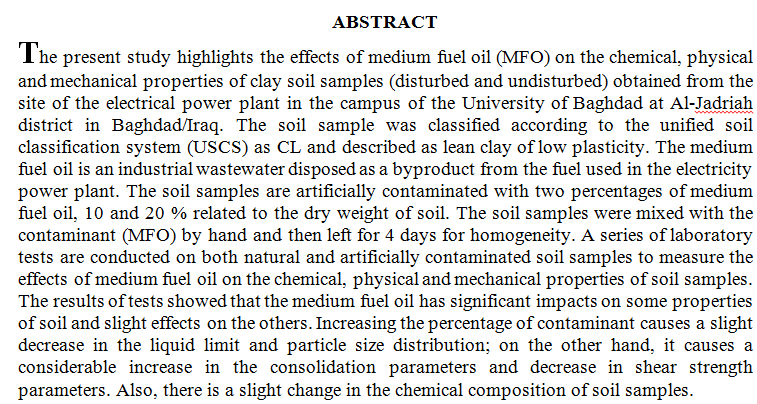
Many studies have evaluated the effect of platelet rich plasma (PRP) in the treatment of non-union fractures but few studies have investigated their effect on the union of femoral neck fractures or their functional outcome in young adults. The aim of this study was to evaluate the union time and functional outcome in young adult patients with femoral neck fracture managed by three cannulated screws injected with PRP and those managed by fixation only. This prospective study included 24 patients diagnosed with femoral neck fractures within 24 hours of presentation. Twelve cases in group A were managed by closed reduction and three cannulated screws fixation injected with PRP; twelve patients in group B were managed only by closed reduction a
... Show More (3)
(3)
 (2)
(2)
 (18)
(18)
 (18)
(18)
The present study aimed to determine the serum sex hormone levels among Benign Prostatic Hyperplasia (BPH) patients before and after 3 months of oral administration of 5-α reductase inhibitor(finasteride). Forty BPH patients and 40 healthy men from Amara city were involved in this study, their ages were between 40-59 year. They were all subjected to direct estimation of hormones by MinVidas method including Testosterone (T), Estradiol (E2), Follicle Stimulating Hormone (FSH), Luteinizing Hormone (LH), Prolactin (PRL), and Dihydrotestosterone (DHT) before and after 3 months of treatment with 5α-reductase inhibitor (finasteride) (the healthy individuals didn’t take finasteride).The results showed that T level was significantly lo
... Show More (1)
(1)
 (1)
(1)
The biological activities of some ternary nickel complexes with a Schiff base obtained from 4-dimethylaminobenzaldehyde and 2-aminophenol have been reported. The Schiff base ( HL1) acts as a primary ligand whereas, anthranilic acid ( HL2), 2-nitroaniline ( HL3), alanine ( HL4) and histidine ( HL5) act as secondary ligand or co-ligand. The anticancer activity of these compounds was studied against human colon carcinoma (HCT-116), human hepatocellular liver carcinoma (HEPG-2) and human breast carcinoma (MCF-7) cell lines. As per the results, the compounds were active against the cell lines. The antioxidant activity of the same compounds was evaluated using DPPH (1,1-diphenyl-2-picryl-hydrazyl) radical scavenging and compared with ascorbic aci
... Show More (3)
(3)
The present study aimed to investigate the anatomy, histology, and immunohistochemistry of parathyroid gland in two Iraqi mammals (Weasel, Herpestes javanicus and Long-ear hedgehog, Hemiechinus auritus) as a comparative study. A total of (20) animal for each species were used in the present study. Animals collected were immediately anesthesia and dissected to get the parathyroid gland. Methods of Humason and Bancroft and Stevens were employed for histological techniques. Different stains were used (Hematoxylin- Eosin stain-(H & E), Periodic Acid Schiff stain-(PAS), Azan stain, and Methyl Blue stain-(MB)) for staining the histological sections. Anti-calcitonin, code140778 marker used for immune-histochemical study. Results of the present stu
... Show More1-[4-(2-Hydroxy-4, 6-dimethyl-phenylazo)-phenol]-ethanone (HL1) and 2-(4-methoxy-phenylazo)-3, 5- dimethyl-phenol (HL2) were produced by combination the diazonium salts of amines with 3, 5- dimethylphenol. The geometry of azo compounds was resolved on the basis of (C.H.N) analyses, 1H and 13CNMR, FT-IR and UV-Vis spectroscopic mechanisms. Complexes of La (III) and Rh (III) have been performed and depicted. The formation of complexes has been identified by using elemental analysis, FTIR and UV-Vis spectroscopic process as well, conductivity molar quantifications. Nature of complexes produced have been studied obeyed mole ratio and continuous alteration ways, Beer's law followed through a concentration scope (1×10-4 - 3×10-4 M). High molar
... Show More1-[4-(4-Acetyl-2-hydroxy-phenylazo)-phenyl]-ethanone (L1) and 1-[3-Hydroxy-4(4-nitro-phenylazo)-phenyl]-ethanone (L2) were readied by combination the diazonium salts of amines with 3-hydroxyacetophenone. (C.H.N) analyses, infrared spectra, UV–vis electronic absorption spectra, 1H and 13CNMR spectral mechanisms are use to identified of the ligands. Complexes of Ni+2 and Cu+2 were performed as well depicted. The formation of complexes has been identified by using atomic absorption of flame, elemental analysis, infrared spectra and UV-Vis spectral process as well conductivity and magnetic quantifications. Nature of compounds produced have been studied obeyed the mole ratio and continuous contrast methods, Beer's law followed during a concent
... Show More